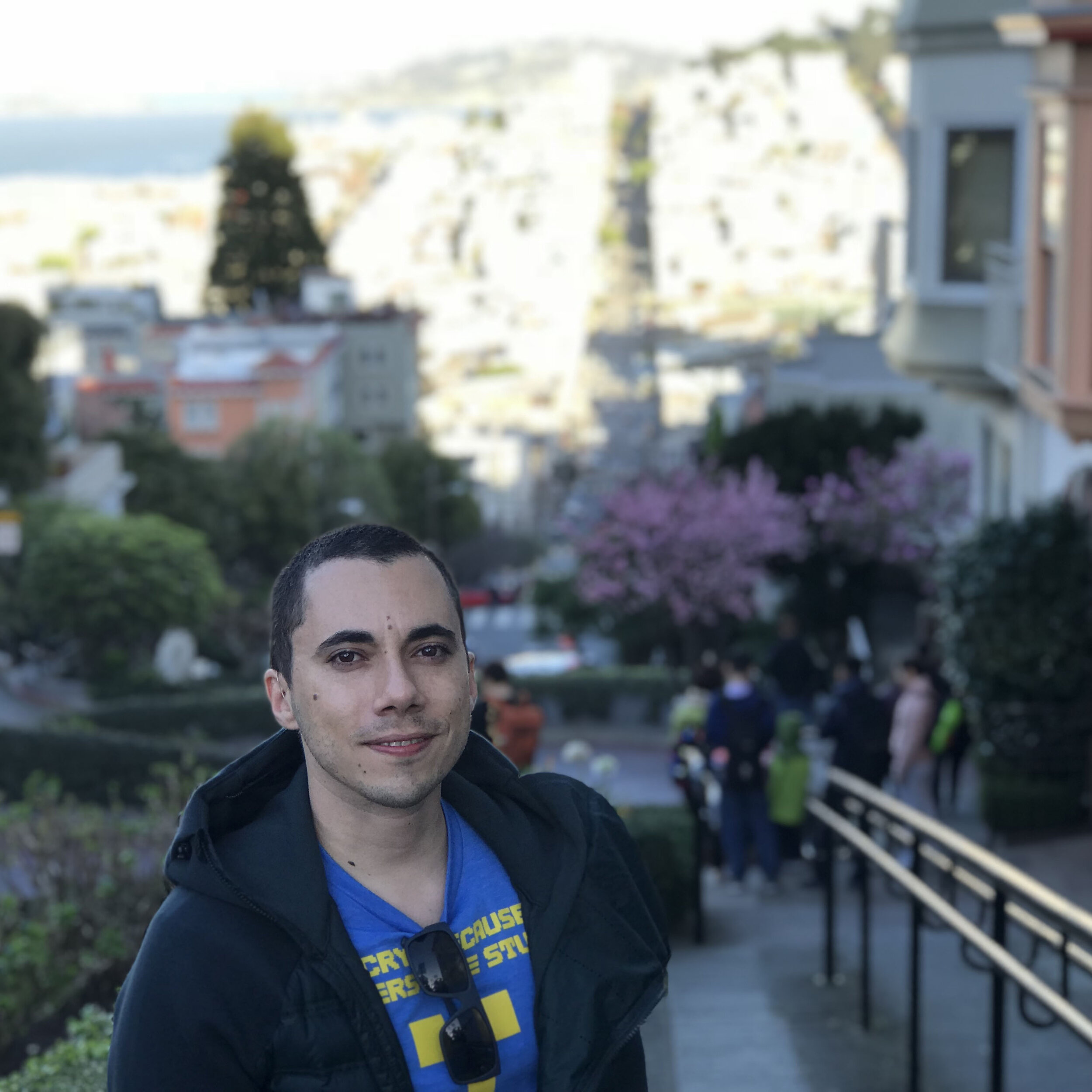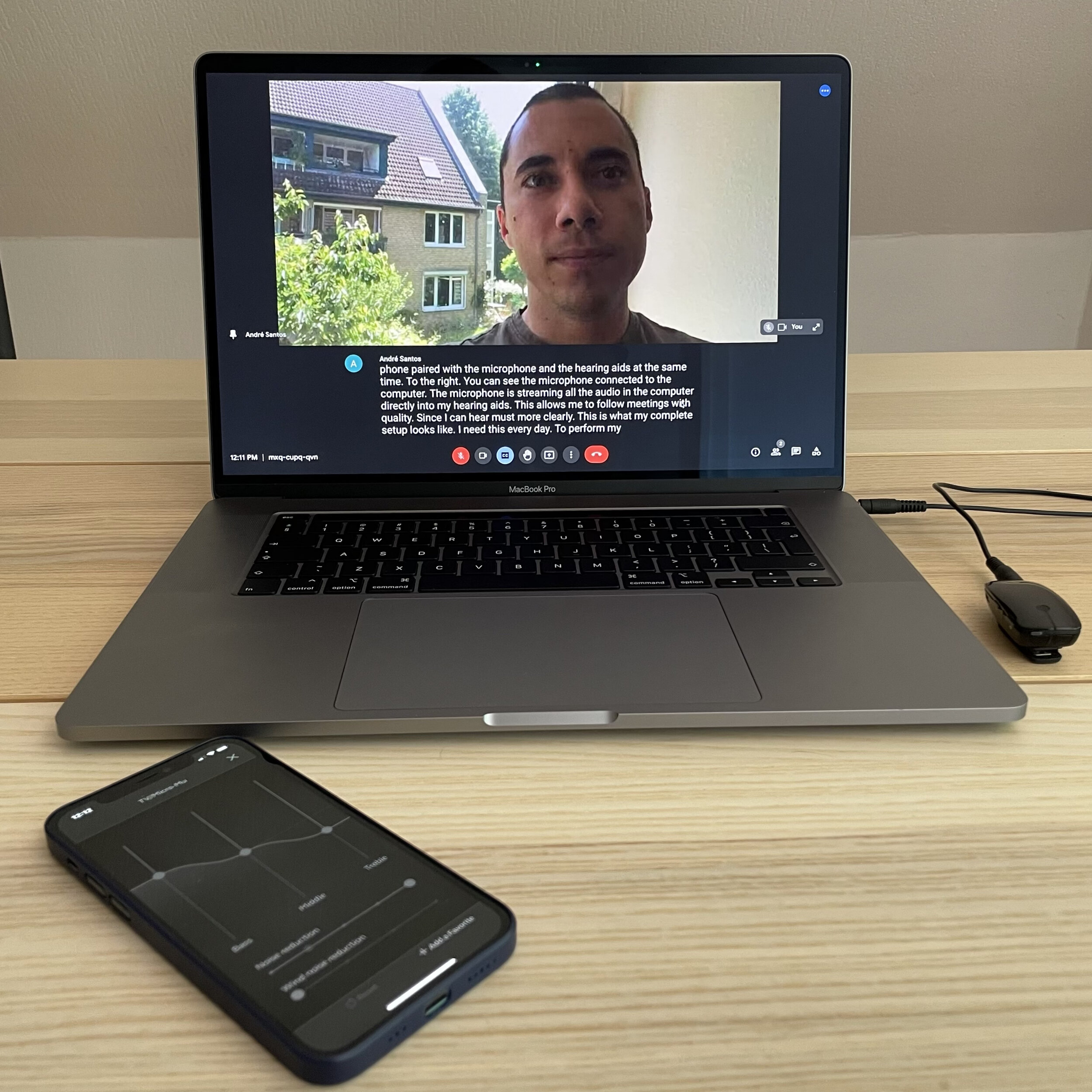At Mimi we understand it is our responsibility to create an inclusive working environment for all Mimian’s, regardless of their abilities, gender, ethnicity, language or anything else.
This month we spoke with Mimi’s Software Engineer André Santos, who lives with severe to profound hearing loss, about how COVID has affected his day-to-day life and the actions companies can take to make their workplaces more inclusive.
1. Can you tell me a bit about yourself?

I’m André Santos, I was born in the north of Brazil and moved to Germany three years ago. I am a Software Engineer at Mimi and I live with severe to profound hearing loss.
2. How did you discover that you had hearing loss?
My mom realized when I was around 2 years old and starting to develop speech. She noticed that I was developing differently from other children my age so, among other things, she took me for a hearing test. This was a specific test called BERA, that worked with electrodes to get readings from my hearing nerve while it was stimulated, in order to confirm the diagnosis. A common approach for little children.
3. How do you think that having hearing loss affected you while growing up?
It was definitely something that has made growing up different. I always wore hearing aids when I was a child and completed speech and musical therapy to improve my hearing and comprehension. I also completed my studies in regular schools rather than specialised hearing schools as these were all that existed where I lived in Brazil. So, I had to insert myself as best as I could into the hearing world and because of this, I always felt a little bit different.
4. You mentioned your hearing aids, can you tell me a little bit more about the technology you use in your daily role?
To get the most out of my residual hearing, I wear state-of-the-art hearing aids. Mine are specifically made for use with iPhones and can connect seamlessly to iOS. The iPhone then can control functions such as ambient noise reduction, EQ and overall amplification volume. It also works as a bridge to the MultiMic, a super versatile boosting microphone and streamer. With the MultiMic, I can also connect my hearing aids to the audio output of my computer, so that the output is streamed directly into them. A cool aspect of my hearing aids is that they are capable of processing both the regular amplification it produces and the MultiMic stream at the same time. This means that right now, I can listen to you and myself “mixed together”, rather than having to choose one or the other. This then gives me a live experience a lot more similar to what everyone else experiences.
As part of the therapeutic approach to keep my sound discerning and comprehension in check, I wear my hearing aids mostly all day long. I wake up, I put them on and take them off when I go to bed. The inner shells are 3D-printed, so they’re exactly the shape of my ear for good isolation. Sometimes I even forget that I’m wearing them!
In a remote setting which is always more complicated, I also use subtitles. I’m using the Google Suite closed captioning service right now in our call. Subtitles can however be a little bit of a challenge depending on what platform you use. For example, with Zoom, you must use a separate service to generate subtitles and Microsoft Teams can be a challenge to work with and suffers with some lag.
5. What was it like before moving to a remote work setting?
My hearing aids have specific settings for office spaces. Like I mentioned before, the MultiMic doubles as an open field microphone. So usually I would pair it with the phone and put it in the middle of the meeting room desk to pick up and amplify everybody’s voice for clarity. I also lip read all the time, even right now, in this video call. This is a big part of my day and I can lipread in English, Portuguese and a bit of Spanish. It came naturally to me when I was a child; I thought I could hear louder if I looked at someone, but when I was 7, I realized I was actually lipreading. My sister was the same. She also lives with profound hearing loss and we discovered this “new life” together. It was groundbreaking; we could even hold entire conversations together making no sound. Lipreading is like my superpower and requires a high level of attention to help me follow conversations which I think has trained my mind over time. I believe it even translates into my work as a developer.
6. How has COVID affected your day-to-day life?
I would describe it as my personal nightmare. It changed my dynamic for everything. With everyone wearing masks it means I am unable to lipread plus, I’m in a foreign country where I don’t dominate the language which adds another layer of challenge. Luckily, my partner is very much together with me in this and if I have important appointments, he will always tag along. However, this can also be a challenge in itself with the restrictions as they count how many people enter one room so I need permission. Nevertheless, I do feel very fortunate as I have a lot of support from him and my friends. I’m sure COVID is silently isolating those who don’t have the support I am lucky to have.
7. What are some actions you think companies can take to make their workplaces more inclusive?


André’s remote work setup using Google Meet
The number one action that companies can take is to be open and talk about it. Make it visible that you are trying to support your employees. Ask them if they need something specific to carry out their role or if you can change something for them for the better. You’d be surprised at how many times I had to speak up and say, “Hey, this doesn’t work for me”, because, for example, the size of a meeting room was too big (sound reverberation makes everything harder to follow). I heard answers like, “I’m sorry, we can’t move the whole team just because you can’t follow the meeting”. That happened more than I would like to tell you which is why I think it is really important as it seems really simple but it still happens in a lot of places.
I think this is also what makes Mimi special as hearing loss is already so present in the product so it is something people already have on their radar which changes the dynamic. For example, whenever anyone sets up a meeting with me they will always use Google Meet for the subtitles.
This was also what attracted me to Mimi as it felt really connected to me in a different way. If I can somehow put my technical expertise into a product that is helping other people with some level of hearing loss, it feels really good.
Companies need to normalise inclusivity and accessibility when someone mentions the topic, it should not be something uncomfortable or surprising. The workplace should be an inclusive place that not only welcomes people with specific needs but absolutely everyone.
I like to be very open about my experience with severe hearing loss because if I don’t tell you, then who will? How many people in my specific condition are you going to meet? How often will you be able to learn about it? Probably not that often. So this is how I do it; I like to talk about it and show my gadgets because this will help you if you meet someone else with hearing loss in the future. It means you won’t think “how should I act?” or “what are they going to think?” because you already had a nice conversation about it with me.
This is how I see it and I always say: when you make a workplace or any environment, inclusive and open for people, you’re not just helping people that have specific needs, you’re helping everyone.
Andre joined the Mimi team back in February as our newest iOS developer.
Can you see yourself as our next Software Developer?
Take a look at our careers page to see the latest job openings.

